Every Man a King
The VIPs Visit Colonial Williamsburg
by Mary Miley Theobald
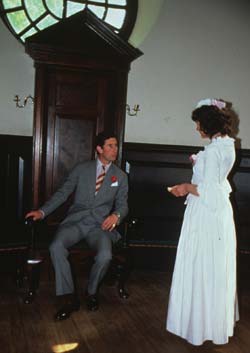
During his 1981 tour, Prince Charles stopped at the Capitol.
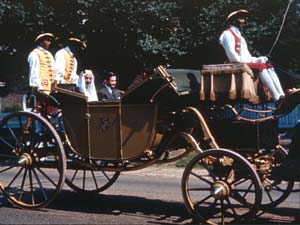
Saudi Arabia’s King Faisal rode through the Historic Area in 1970. With him is American Chief of Protocol James Symington.
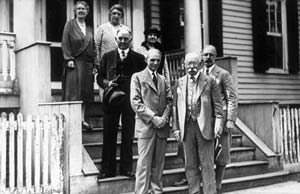
Henry Ford came in 1929 by train.
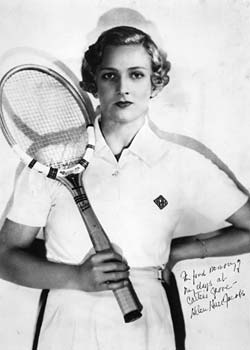
Tennis star Helen Hull Jacobs stayed five months in 1939-40.
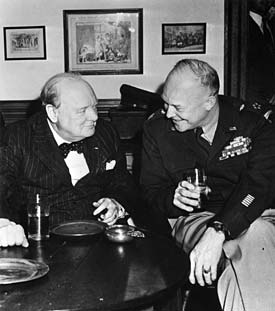
Winston Churchill and Dwight Eisenhower shared a glass at the Inn, 1946.
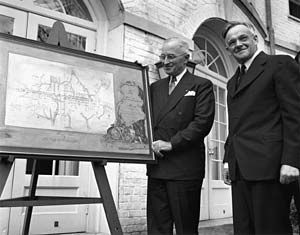
President Harry Truman and Mayor Vincent McManus at the Inn, 1948. - Colonial Williamsburg
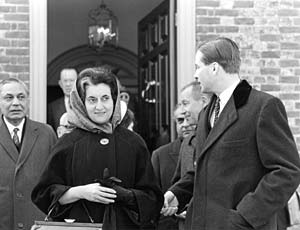
Prime Minister Indira Gandhi at the Palace in 1966. - Colonial Williamsburg
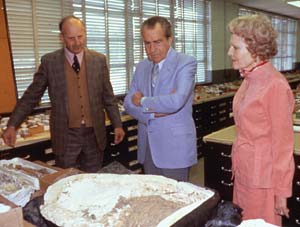
Archaeologist Ivor Noël Hume shows his lab to the Nixons, 1981. - Colonial Williamsburg
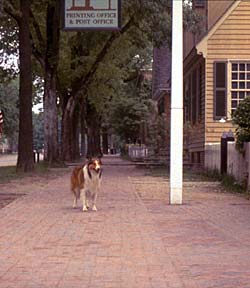
Television star Lassie takes a stroll, 1966.
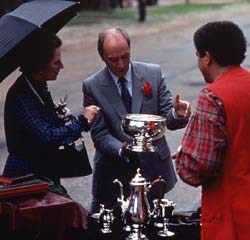
Prime Ministers Margaret Thatcher and Pierre Trudeau with silversmith Jimmy Curtis, 1983.
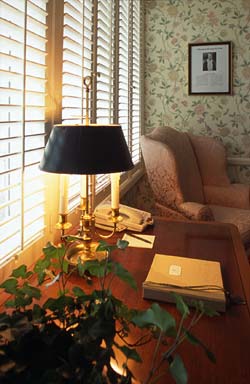
In each room of the refurbished and re-opened Williamsburg Inn are displayed a photo and a brief story about a VIP who visited the city.
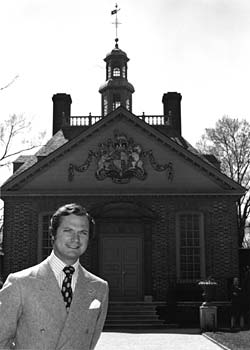
The king of Sweden, Carl Gustaf XVI took
a look at Colonial Williamsburg’s palace in 1976
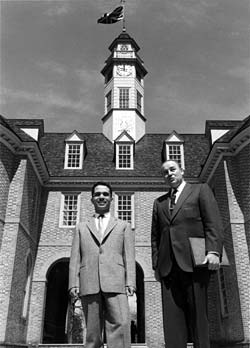
Chairman Winthrop Rockefeller showed Jordan’s King Hussein around the Capitol in 1959.
Countless distinguished visitors, important people from all over the world, have come to Colonial Williamsburg. The town has welcomed every American president since 1926 except Kennedy, as well as most vice presidents, and hundreds of senators, congressmen, governors, and Supreme Court justices. Add to that group scores of kings and queens, princes and princesses, heads of state, military leaders, movie stars, sports celebrities, musicians, artists, religious leaders, authors, and television personalities. Some stay a couple of hours-Jimmy Carter gave a fund-raising speech at the Williamsburg Lodge in 1977 and slipped out before dinner-most stay a few days. John Wayne lingered for a week in 1978. International tennis champion Helen Hull Jacobs was so “tremendously pleased” with Colonial Williamsburg that she rented the Orrell House for five months in 1939-40. Many VIPs returned for a second visit. King Hussein of Jordan came four times, as did James Michener and the Shah of Iran. Richard Nixon made at least five trips. Margaret Thatcher has lost count.
The capital of the largest and most populous of Great Britain’s mainland colonies, eighteenth-century Williamsburg drew American and European travelers like a magnet. The first genuine celebrity to walk down Duke of Gloucester Street was probably Benjamin Franklin, the printer-scientist who had achieved international fame for taming lightening. A “foreigner” from the Pennsylvania colony, he came to Williamsburg in 1756 on post office business and collected an honorary degree from the College of William and Mary. It was the college’s first but Franklin’s third-he had collected similar honors from Yale and Harvard three years before. He enjoyed his visit and was impressed by the hospitality of the natives. Like many visitors, he wrote home with his observations: “Virginia is a pleasant country, now in full spring; the people extremely obliging and polite.”
Skipping over George Washington, Patrick Henry, Thomas Jefferson, and other heroes of the Revolution, Williamsburg’s next distinguished visitor was Noah Webster. The city was a stop on a lecture tour the young author took in 1785 to promote his speller. Traveling on horseback and by stage, Webster visited Richmond, Petersburg, and Williamsburg, counting houses as he went-230 in Williamsburg-and lecturing on the need for an American language. Unlike Franklin, he found little to like about Virginia. The people’s “amazing fondness for Dissipation” offended his puritanical upbringing. “Plays, horse-races & games are almost the sole objects of pursuit,” he said. The degree of illiteracy appalled him; after all, the absence of schools was bad for textbook sales. “Great numbers of men . . . cannot write their names,” he wrote. “O New England! how superior are thy inhabitants in morals, literature, civility & industry.”
The 1824 visit of the aging Marquis de Lafayette was like nothing Williamsburg had experienced. An important stop on his media-hyped American tour, the stopover was made more meaningful by his lodging at the house where he had been quartered during the Battle of Yorktown, today known as the Peyton Randolph House, and by his reunion with James Lafayette, the former slave and wartime spy who had adopted the Frenchman’s name out of respect. The college took the opportunity to bestow an honorary doctor of law degree on the beloved Frenchman.
During the nineteenth and early twentieth centuries, the college conferred honors mostly on clergymen and state legislators but occasionally stretched itself to include men of national prominence. Presidents John Tyler, Woodrow Wilson, Warren Harding, Calvin Coolidge, Herbert Hoover, Franklin Roosevelt, and Harry Truman all came to Williamsburg to receive degrees, and all saw something of eighteenth-century Williamsburg while in town.
The historic restoration known as Colonial Williamsburg started in November of 1926 when John D. Rockefeller, Jr., began purchasing Williamsburg property. The first official Very Important Person to tour the Restoration arrived on opening day, 1934. Franklin D. Roosevelt motored down Duke of Gloucester Street in the presidential touring car and gave a short speech in which he called the thoroughfare the “most historic avenue in all America.”
Although the Great Depression discouraged travel, Williamsburg drew several thousand annual visitors during the 1930s. Among them were child star Shirley Temple, artist Georgia O’Keefe, and oboist Mitch Miller-before he became known for his sing-along chorus. Wartime rationing restricted travel during most of the 1940s, but the poet Robert Frost was at Chowning’s Tavern when it opened just a few days before Pearl Harbor. Walt Disney came during the war to learn what Colonial Williamsburg was doing in the new field of educational filmmaking. Winston Churchill, Dwight Eisenhower, George C. Marshall, and President Truman visited after the war ended.
Most VIPs stayed at the Williamsburg Inn or in one of the Inn’s restored colonial houses. Built in 1937, the Williamsburg Inn offered the finest accommodations in the area. Queen Elizabeth II occupied an Inn suite in 1957, King Hussein in 1959. In 1938, two colonial homes, the Orrell House and the Quarters, were furnished for overnight guests who wanted a more authentic eighteenth-century experience. These proved so popular over the years that more than two dozen residences, outbuildings, and taverns scattered throughout the Historic Area are now available to the public. Author James Michener enjoyed the Moody House in 1966 and 1976; as did Lady Bird Johnson in 1977 and German Prime Minister Helmut Kohl in 1983. Canadian Prime Minister Pierre Trudeau stayed at the Bracken House in 1983, the year Ronald Reagan put up at Providence Hall House. The Chiswell-Bucktrout House welcomed Maori Queen Dame Te Atairangikaahu from New Zealand in 1979 and Prime Minister Margaret Thatcher in 1983.
In 1962 the Lightfoot House, on Francis Street a few steps from the Inn, was designated the official residence for distinguished guests. Since then, Thatcher, Anwar Sadat of Egypt, Indira Gandhi of India, King Olav V of Norway, François Mitterand of France, and scores of other heads of state have enjoyed the comfort and privacy of this elegantly restored eighteenth-century house. The entourage that always accompanies royalty and heads of state usually books rooms at the Inn or at the Williamsburg Lodge.
In the 1950s Colonial Williamsburg President Carlisle Humelsine began a program with the U.S. Department of State that routed foreign leaders through Williamsburg on their way to Washington. Humelsine, who had been a deputy undersecretary of state before coming to Colonial Williamsburg in 1953, said an introduction to American history would bring about a greater understanding of America’s democratic values. Such visits would also have the practical benefit of giving the guest a day or two to recover from the long trip and the time change before heading into the national capital’s whirl of summit meetings and state dinners.
The heir to Japan’s Chrysanthemum throne was the first foreign visitor under the program. Nineteen-year-old Crown Prince Akihito, today emperor, was on his first overseas trip when he came to Williamsburg. The royal tour received wide coverage from the international press. A few weeks later, King Paul and Queen Frederika of Greece arrived, much to the delight of Williamsburg’s vibrant Greek community.
The State Department- sponsored visits followed a general pattern. They usually began with a private screening of the movie Williamsburg-The Story of a Patriot and a ride through the Historic Area in a horse-drawn carriage. Reporters and photographers dogged the visitors for a short while, but their access was minimized to preserve the visitors’ privacy. Favorite photo ops were in the carriage, in the Speaker’s Chair at the Capitol, and in front of the Governor’s Palace. Time constraints and individual preferences influenced which stops a VIP might make.
Typically the itinerary included the Capitol, the Governor’s Palace, and two or three historic trades sites. Guests who stayed several days often toured Jamestown and Yorktown to see the beginning and the end of English colonialism in America.
Sometimes the visitors had special requests: In 1981, Richard and Pat Nixon asked for a tour of the archaeology lab. When the flu confined Yugoslavia’s Communist leader Josip Broz Tito to bed at the Lightfoot House in 1963, his wife asked to visit a plantation and an American grocery store.
Distinguished visitors arrived by train like Winston Churchill in 1946, by private plane like Jack Nicklaus in 1967, by yacht like President Truman in 1948, by helicopter like King Faisal of Saudi Arabia in 1966, and by limousine like Shirley Temple in 1938 and the Shah of Iran in 1973. Sometimes Marine One, the president’s helicopter, landed on the golf course immediately next to the Williamsburg Inn to pick up or drop off a chief executive or foreign leader. Traditionally, the Fife and Drum Corps greeted them, either at the airport or in the Historic Area. An elegant reception and dinner at the Governor’s Palace or Carter’s Grove, complete with eighteenth-century entertainment, were standard.
The State Department advised on dietary requirements, allowing Inn chefs to serve meals and beverages that accommodated each guest’s religion and national customs. King Mahendra and Queen Ratna of Nepal requested fruit with every meal and no pork or lamb. Crown Prince Hassan of Libya asked for mineral water as his only beverage.
Members of Colonial Williamsburg’s staff did their best to anticipate what would please each guest. When they learned Zambia’s President Kenneth Kaunda preferred folk songs to classical music, a balladeer was substituted for the instrumentalists planned for the Palace ballroom. Upon the discovery that Romanian President Nicholas Ceaucescu liked to play volleyball, a net appeared behind the Lightfoot House and a brief game ensued.
Foreign dignitaries were usually presented with a handcrafted gift made by Colonial Williamsburg tradesmen: King Mohammed V of Morocco, who came to Williamsburg at Thanksgiving in 1957, was presented with a silver bowl engraved with images of the Palace, the Capitol, and the Wren Building. President Truman got a framed picture of the Frenchman’s Map for the presidential yacht. Britain’s recently widowed Queen Elizabeth-the Queen Mum-accepted a wooden cribbage board and a miniature silver tea service in 1954 to give her two grandchildren, Prince Charles and Princess Anne.
As the convenience and speed of air travel increased, Colonial Williamsburg’s “decompression chamber” for foreign heads of state was called upon less often. Still, Williamsburg’s international reputation makes it a favorite spot for many foreign leaders. Recently, Williamsburg has welcomed China’s president Jiang Zemin, Denmark’s Queen Margrethe II, Norway’s King Harald and Queen Sonja, and Ireland’s president, Mary Robinson.
Because of Colonial Williamsburg’s reputation for handling visits of foreign heads of state and its proximity to Washington, President Reagan chose it to host the Ninth Annual International Summit of Industrialized Nations in 1983. The enormity of the summit-the logistics, security, and transportation for hundreds of political leaders and thousands from the world press-caused Colonial Williamsburg to close the Historic Area for the first time. For three days in May, the international media spotlight shone brightly.
Film and television personalities have come to Colonial Williamsburg, some to work, others to vacation. There was Mister Rogers in 1993, Perry Como and John Wayne in 1978, and Lassie in 1966-all filmed television show episodes in the colonial capital. In 1979, Kirk Douglas scouted the Historic Area for film possibilities. Douglas Fairbanks Jr. visited in 1951, and Charleton Heston in 1987. Opera star Leontyne Price sang at the Inn in 1983.
A 1995 gathering of the American Academy of Achievement brought three hundred of the most successful people in the country to Williamsburg. There were dozens of well-known men and women from the corporate, scientific, and literary worlds. But film and music stars like Barbra Streisand, Tom Selleck, Naomi Judd, Robin Williams, and George Lucas got the most public attention from the press.
The Williamsburg Inn finishes its extensive restoration and reopens, in part, this autumn with enlarged guest rooms and modernized bathrooms. In an effort to acknowledge the history of distinguished visitors, Sue Green, former vice president of the Colonial Williamsburg Company Hospitality Group, decided to hang in every room a photograph of a famous guest, with details of the visit. Where possible, the picture is matched to the room that guest used. The suite that was redecorated in pastel pinks and greens for young Queen Elizabeth in 1957 now has her picture to remind lodgers of that occasion, as do the rooms that were occupied by John Wayne and Shirley Temple.
The procession of distinguished visitors continues. In recent months, Margaret Thatcher made yet another trip to Williamsburg to speak at the college and at a Colonial Williamsburg luncheon; German Prince Hans Georg and his younger brother, Prince Ludwig Ferdinand, presented a gift to Colonial Williamsburg President Colin Campbell at the Governor’s Palace; and Vice President Dick Cheney attended a dinner at the Wallace Museum.
But everyone who sets foot in Williamsburg is a VIP. Southern hospitality has been liberally ladled out to all comers since Williamsburg was founded in 1699. Nat Reid, bellman at the Williamsburg Inn for forty years, said it best: “It doesn’t matter whether they are a regular guest or a king. We treat them all like kings.”
Mary Miley Theobald contributed to the summer journal the story “Whatever Happened to Benedict Arnold?”
Faces Famous and Familiar
Eleanor Roosevelt
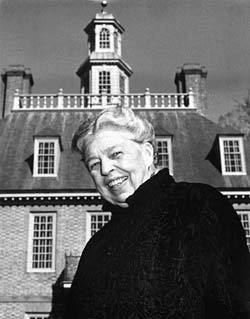 Eleanor Roosevelt paid an unexpected visit to Colonial Williamsburg in
February of 1959. She arrived with friends on a Friday evening
and began the weekend with dinner at Christiana Campbell’s
Tavern. Saturday the seventy-five-year-old former first lady embarked
on a whirlwind tour of the Historic Area that would have exhausted
a teenager. She began with the film Williamsburg- The Story of
a Patriot at the Information Center and hopped the bus for the
Historic Area. She toured the Governor’s Palace first, with
its outbuildings and gardens, then worked her way through the
Brush-Everard House, the Wythe House, Bruton Parish Church, the
Bootmaker’s, the Printing Office, the Post Office, the Millinery
Shop, the Silversmith’s Shop-all before lunch. After a meal
at Chowning’s Tavern, the indefatigable Eleanor went to the
Capitol and the Gaol, drove to Jamestown, returned to see the
Abby Aldrich Rockefeller Folk Art Collection and shop at the Craft
House-where she purchased Delft and silver-dined at the Williamsburg
Inn, and finished the day back at Bruton Church with an organ
recital.
Eleanor Roosevelt paid an unexpected visit to Colonial Williamsburg in
February of 1959. She arrived with friends on a Friday evening
and began the weekend with dinner at Christiana Campbell’s
Tavern. Saturday the seventy-five-year-old former first lady embarked
on a whirlwind tour of the Historic Area that would have exhausted
a teenager. She began with the film Williamsburg- The Story of
a Patriot at the Information Center and hopped the bus for the
Historic Area. She toured the Governor’s Palace first, with
its outbuildings and gardens, then worked her way through the
Brush-Everard House, the Wythe House, Bruton Parish Church, the
Bootmaker’s, the Printing Office, the Post Office, the Millinery
Shop, the Silversmith’s Shop-all before lunch. After a meal
at Chowning’s Tavern, the indefatigable Eleanor went to the
Capitol and the Gaol, drove to Jamestown, returned to see the
Abby Aldrich Rockefeller Folk Art Collection and shop at the Craft
House-where she purchased Delft and silver-dined at the Williamsburg
Inn, and finished the day back at Bruton Church with an organ
recital.
All her life, Eleanor Roosevelt was an energetic and outspoken advocate for the poor and disadvantaged. As first lady, she was an influential proponent of equal rights. When her husband, President Franklin D. Roosevelt, died at the end of World War II, she continued in public service.
Robert Frost
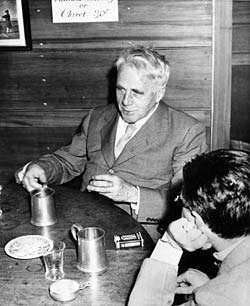 On a cold December afternoon two days before the Japanese attacked
Pearl Harbor, Robert Frost shared a drink with friends at Chowning’s
Tavern. The most popular American poet of his time, Frost had
come from Boston to serve as official poet at the annual meeting
of the Phi Beta Kappa society, founded in 1776 by College of William
and Mary students. He read three of his poems, none of which had
been made public before. The last was “The Gift Outright:”
On a cold December afternoon two days before the Japanese attacked
Pearl Harbor, Robert Frost shared a drink with friends at Chowning’s
Tavern. The most popular American poet of his time, Frost had
come from Boston to serve as official poet at the annual meeting
of the Phi Beta Kappa society, founded in 1776 by College of William
and Mary students. He read three of his poems, none of which had
been made public before. The last was “The Gift Outright:”
The land was ours before we were the land’s.
She was our land more than a hundred years
Before we were her people. She was ours
In Massachusetts, in Virginia,
But we were England’s, still colonials,
Possessing what we still were unpossessed by,
Something we were withholding made us weak
Until we found out that it was ourselves
We were withholding from our land of living,
And forthwith found salvation in surrender. . .
In 1961 he was invited to read one of his poems at the inauguration of President John F. Kennedy. He chose “The Gift Outright.”
John Wayne
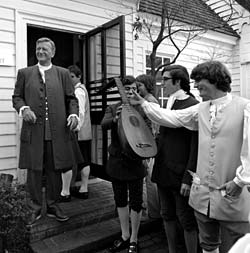
Born in 1907, Marion Robert Morrison adopted the tougher-sounding name John Wayne when he started working as an extra in John Ford’s early western motion pictures. His rugged good looks and macho image brought him half a century of starring roles fighting rustlers, Indians, Germans, Japanese, and legions of other bad guys. When critics lambasted his one-dimensional acting, he shrugged it off. “Nobody seems to like my acting ability but the people,” he was fond of saying. The people backed him at the box office, making him one of the most popular actors in movie history.
Wayne came to Williamsburg for the filming of Perry Como’s 1978 ABC-TV Christmas Special. The musical extravaganza involved dozens of costumed Colonial Williamsburg employees in front of the cameras and hundreds of others behind the scenes. Filming took six days in early November. The autumn leaves still clinging to the trees had to be singed off to give the illusion of winter. Wayne took a suite at the Williamsburg Inn for the week. Always gracious and unassuming, the Academy Award-winning actor chatted easily between scenes with employees, visitors, and the press.
His scenes in the Perry Como special were among his last before the camera. Seven months later, the screen legend, who had come to symbolize American courage and patriotism, was dead at seventy-two.
